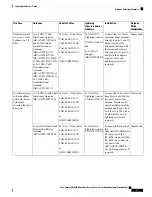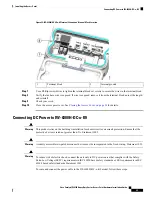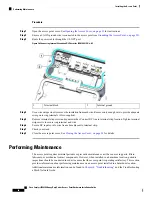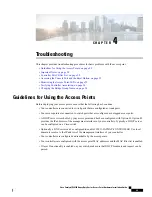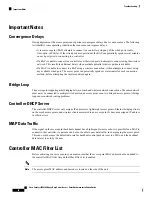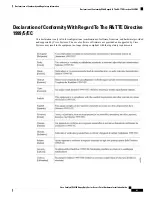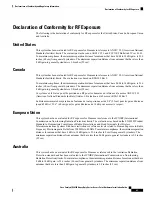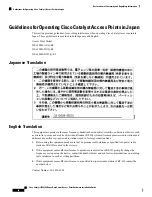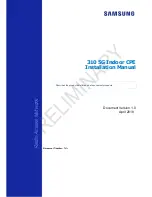
Important Notes
Convergence Delays
During deployment, the access points can experience convergence delays due to various causes. The following
list identifies some operating conditions that can cause convergence delays:
• A root access point (RAP) attempts to connect to a controller using any of the wired ports (cable,
fiber-optic, or PoE-In). If the wired ports are operational, the RAP can potentially spend several minutes
on each port prior to connecting to a controller.
• If a RAP is unable to connect to a controller over the wired ports, it attempts to connect using the wireless
network. This results in additional delays when multiple potential wireless paths are available.
• If a MAP is unable to connect to a RAP using a wireless connection, it then attempts to connect using
any available wired port. The access point can potentially spend several minutes for each connection
method, before attempting the wireless network again.
Bridge Loop
The access point supports packet bridging between wired and wireless network connections. The same network
must never be connected to multiple wired ports on an access point or on two bridged access points. A bridge
loop causes network routing problems.
Controller DHCP Server
The controller DHCP server only assigns IP addresses to lightweight access points, Ethernet bridging clients
on the mesh access points, and wireless clients associated to an access point. It does not assign an IP address
to other devices.
MAP Data Traffic
If the signal on the access point backhaul channel has a high signal-to-noise ratio, it is possible for a MAP to
connect to the controller, via parent node, but not be able to pass data traffic, such as pinging the access point.
This can occur because the default data rate for backhaul control packets is set to 6 Mb/s, and the backhaul
data rate set to auto by the user.
Controller MAC Filter List
Before activating your access point, you must ensure that the access point MAC address has been added to
the controller MAC filter list and that Mac Filter List is enabled.
The access point MAC address and barcode is located on the side of the unit.
Note
Cisco Catalyst IW6300 Heavy Duty Series Access Point Hardware Installation Guide
50
Troubleshooting
Important Notes


